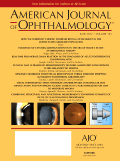
AMERICAN JOURNAL OF OPHTHALMOLOGY
Scope & Guideline
Connecting Researchers with Ocular Excellence
Introduction
Aims and Scopes
- Clinical Ophthalmology:
The journal publishes studies related to clinical practices in ophthalmology, including surgical interventions, diagnostics, and patient management across various eye diseases. - Vision Science and Research:
Research focusing on the biological and physiological aspects of vision, including studies on the retinal structure, visual processing, and the impact of systemic diseases on vision. - Innovative Technologies and Techniques:
Papers exploring novel surgical techniques, device development, and advancements in imaging technologies such as Optical Coherence Tomography (OCT) and its applications in diagnosing eye conditions. - Epidemiology and Public Health:
Studies assessing the prevalence, risk factors, and socio-demographic influences on eye diseases, aimed at improving public health strategies related to eye care. - Genetics and Molecular Biology:
Research focusing on the genetic underpinnings of ocular diseases, including hereditary conditions and the implications of genetic findings for diagnosis and treatment. - Patient-Centered Outcomes and Quality of Life:
Research evaluating patient-reported outcomes, quality of life assessments, and the psychosocial impact of eye diseases and treatments.
Trending and Emerging
- Artificial Intelligence in Ophthalmology:
Increasing research on the application of AI and machine learning for diagnosing and predicting eye diseases, showcasing a growing reliance on technology to enhance clinical decision-making. - Telemedicine and Remote Monitoring:
The rise of teleophthalmology, particularly accelerated by the COVID-19 pandemic, highlights the importance of remote consultations and monitoring in improving access to eye care. - Minimally Invasive Surgical Techniques:
A surge in studies focusing on minimally invasive approaches for various ocular surgeries, reflecting a trend towards reducing recovery times and improving patient outcomes. - Integrated Care Models:
Research emphasizing interdisciplinary approaches to eye care, considering the systemic health impacts on ocular conditions and promoting holistic patient management. - Patient-Reported Outcomes:
An increased focus on incorporating patient-reported outcomes and quality of life metrics into ophthalmic research, aligning with broader healthcare trends toward patient-centered care.
Declining or Waning
- Traditional Surgical Techniques:
Papers focused on conventional surgical methods have decreased as newer, minimally invasive techniques gain popularity and are more frequently researched. - General Ophthalmology Reviews:
The volume of general review articles on broad ophthalmic topics has diminished, possibly due to a shift toward more specialized and targeted research. - Basic Science Without Clinical Application:
Research that primarily explores basic science in isolation from clinical applications is less prevalent, as the journal seeks to publish studies with direct implications for patient care. - Single-Center Studies:
The trend of single-center studies is declining in favor of multi-center collaborations, which are more robust and provide broader data for analysis. - Aging-Related Studies:
While aging-related ocular conditions remain important, specific studies solely focused on aging without considering co-morbidities or broader health impacts are less frequently published.
Similar Journals

Journal of Ophthalmic & Vision Research
Fostering Global Collaboration in Eye ScienceThe Journal of Ophthalmic & Vision Research, published by KNOWLEDGE E, stands as a crucial platform for disseminating high-quality research in the field of ophthalmology. With an ISSN of 2008-2010 and an E-ISSN of 2008-322X, this journal fosters open access to valuable insights since 2010, enhancing visibility and reach for researchers globally. Based in Dubai, UAE, it has established a reputation for excellence, reflected in its Q2 ranking in Ophthalmology for 2023 and its position among the top 65th percentile in Scopus. Covering a broad spectrum of topics within ophthalmic science, the journal serves as a vital resource for professionals, researchers, and students by presenting original research, reviews, and case studies that drive innovation and collaboration within the community. As the journal continues to contribute to advancements in eye care and vision sciences, it invites scholars to explore, engage, and publish within its pages, thus enriching the global discourse on ophthalmic health.
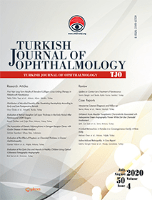
Turk Oftalmoloji Dergisi-Turkish Journal of Ophthalmology
Exploring the Frontiers of Ocular ScienceTurk Oftalmoloji Dergisi - Turkish Journal of Ophthalmology is a premier peer-reviewed publication dedicated to the field of ophthalmology, published by GALENOS PUBL HOUSE. Since its inception in 1997, this Open Access journal has championed the dissemination of high-quality research, fostering an inclusive environment for sharing knowledge and advancements in eye health. With an ISSN of 1300-0659 and an E-ISSN of 2147-2661, the journal serves as a vital resource for researchers, clinicians, and students interested in the latest findings and innovations in ophthalmic sciences. Although its coverage in Scopus has been discontinued since 2017, the journal has garnered a significant rank of 80 out of 114 in the field of Medicine – Ophthalmology, highlighting its relevance and impact within the discipline. Operating out of Istanbul, Turkey, the Turkish Journal of Ophthalmology continues to be a crucial platform for ophthalmologists and researchers to publish their work and advance the understanding of ocular health.

Asia-Pacific Journal of Ophthalmology
Empowering vision science with open access knowledge.Asia-Pacific Journal of Ophthalmology is a distinguished open access journal published by the Asia-Pacific Academy of Ophthalmology (APAO), specializing in the latest advancements and research in ophthalmology. Since its inception in 2013, this journal has established itself as a vital platform for disseminating innovative findings and clinical practices across the Asia-Pacific region and beyond. With an impressive Scopus ranking of #10 out of 137 in the field of Medicine (Ophthalmology), placing it in the 93rd percentile, it garners significant attention and respect within the academic community. Currently holding a Q1 categorization in both Medicine (miscellaneous) and Ophthalmology, the journal embraces a broad scope that encompasses clinical studies, experimental research, and reviews aimed at enhancing the understanding and management of eye health. Its open access model since 2019 ensures that all published works are freely accessible, promoting greater collaboration and knowledge sharing among researchers, clinicians, and students. Situated in the Netherlands with a prominent address in Hong Kong, the journal serves as an essential resource for anyone dedicated to the field of ophthalmology.

JAPANESE JOURNAL OF OPHTHALMOLOGY
Transforming Perspectives in OphthalmologyJapanese Journal of Ophthalmology, published by Springer Japan KK, is a premier peer-reviewed journal dedicated to advancing the field of ophthalmology. With an impressive impact reflected in its Q1 categories—ranking among the top journals in both Medicine (miscellaneous) and Ophthalmology, as per the 2023 metrics—it serves as an essential platform for researchers and professionals to disseminate their findings. Covering a broad spectrum of topics from clinical studies to innovative technologies in eye care, this journal not only supports the ongoing education of its readership but also fosters significant developments within the field. The journal, which has been in circulation since 1973 and is set to continue through 2024, offers access to vital research, thereby enabling practitioners and scholars to keep abreast of the latest advancements. Its distinguished Scopus ranking of #30 out of 137 in Medicine - Ophthalmology, placing it in the 78th percentile, further underscores its influence and importance in contributing to the global understanding of eye health.

Eye and Vision
Empowering research and innovation in eye health.Eye and Vision, published by BMC, is a leading open-access journal dedicated to the dynamic field of ophthalmology and visual sciences. With its ISSN 2326-0246 and E-ISSN 2326-0254, the journal has established itself as a premier platform for innovative research and clinical studies, achieving impressive rankings in 2023 as Q1 in both Health Professions (Miscellaneous) and Ophthalmology categories. The journal's commitment to accessible knowledge since its transition to open access in 2015 enhances its global reach, allowing researchers, clinicians, and students to share and access top-tier studies and advancements in the field. Located in the United Kingdom and delivering influential insights from 2014 through to 2024, Eye and Vision holds significant relevance, with a Scopus ranking placing it in the 99th percentile for Health Professions and the 93rd percentile for Ophthalmology, making it an essential resource for those looking to stay at the forefront of eye research and vision science.
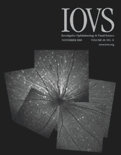
INVESTIGATIVE OPHTHALMOLOGY & VISUAL SCIENCE
Illuminating the path to ocular innovation.Investigative Ophthalmology & Visual Science (IOVS) is a leading academic journal published by the Association for Research in Vision and Ophthalmology, dedicated to advancing the field of ophthalmology and visual science. With an impressive impact factor and ranking in the Q1 category for both Ophthalmology and Sensory Systems, IOVS is well-respected for disseminating cutting-edge research and innovative discoveries. Established in 1977, this Open Access journal allows for broad accessibility to pioneering studies, fostering collaboration among researchers, clinicians, and students. The journal has consistently maintained high visibility in the academic community, evidenced by its robust rankings in Scopus, including Rank #16 in Ophthalmology. As it continues to pave the way for future developments in the understanding and treatment of ocular diseases, IOVS serves as an invaluable resource for those immersed in the complex field of visual science.

Translational Vision Science & Technology
Advancing the Frontiers of Vision Science and TechnologyTranslational Vision Science & Technology is a premier open access journal dedicated to the advancement of the field of ophthalmology and biomedical engineering. Published by the Association for Research in Vision and Ophthalmology, Inc., this journal has established itself as a leading source of high-quality research since its inception in 2013, achieving a remarkable impact factor reflective of its influential contribution to the field. With an impressive ranking of #21 in Ophthalmology and #120 in Biomedical Engineering within the Scopus database, it sits within the prestigious Q1 quartile for both categories as of 2023, further validating its significance. The journal's scope encompasses a wide variety of topics focused on the intersection of ophthalmological science and technological innovation, welcoming contributions that promote the understanding and treatment of visual disorders. Available as an Open Access publication since 2016, it ensures that cutting-edge research is freely accessible to researchers, practitioners, and students worldwide, facilitating the rapid dissemination of knowledge essential for the advancement of vision science.
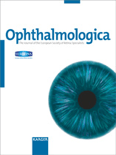
OPHTHALMOLOGICA
Unveiling the Science Behind SightOPHTHALMOLOGICA is a prestigious journal published by KARGER, dedicated to the dynamic field of ophthalmology and its interdisciplinary connections with medicine and sensory systems. With a rich history spanning over a century since its inception in 1899, this journal is esteemed for its high-quality research and impactful contributions, maintaining an impressive Q1 quartile ranking in both ophthalmology and miscellaneous medicine as of 2023, alongside a notable Q2 status in sensory systems. The journal's influence is reinforced by its Scopus rankings, where it ranks 26th out of 137 in ophthalmology, showcasing a strong percentile position of 81. Based in Basel, Switzerland, OPHTHALMOLOGICA serves as an essential platform for researchers, professionals, and students, providing essential insights, reviews, and studies that push the boundaries of knowledge in the vision sciences. Although it does not currently offer open access, its contributions are critical for those pursuing advancements in ocular health and related disciplines.
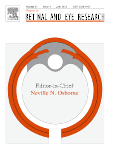
PROGRESS IN RETINAL AND EYE RESEARCH
Championing Excellence in Eye ResearchPROGRESS IN RETINAL AND EYE RESEARCH, published by PERGAMON-ELSEVIER SCIENCE LTD, is a premier journal dedicated to the advancement of knowledge in the fields of ophthalmology and sensory systems. With an impressive impact factor and a Q1 category ranking in both Ophthalmology and Sensory Systems as of 2023, this journal exemplifies excellence in research dissemination. Given its stature, it ranks #1 out of 137 in Ophthalmology and #1 out of 42 in Neuroscience - Sensory Systems, placing it within the top percentile of scientific publications in these domains. The journal has been actively contributing to the field since its inception in 1994 and continues to be a vital resource for researchers, clinicians, and students seeking the latest insights and breakthroughs in the understanding of retinal diseases and eye health. While it maintains a traditional subscription model, the journal remains committed to publishing high-quality, peer-reviewed articles that drive forward the frontiers of eye research and therapeutic innovation. With its strong scientific rigor and a vast array of articles, PROGRESS IN RETINAL AND EYE RESEARCH is indispensable for anyone invested in the study of visual sciences.
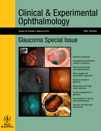
CLINICAL AND EXPERIMENTAL OPHTHALMOLOGY
Illuminating Innovations in OphthalmologyCLINICAL AND EXPERIMENTAL OPHTHALMOLOGY is a leading peer-reviewed journal published by Wiley, renowned for its commitment to advancing the field of ophthalmology. With an impressive impact factor reflecting its high-quality research contributions, this journal is ranked in the Q1 category both in Medicine (miscellaneous) and Ophthalmology, signifying its crucial role in shaping contemporary ophthalmic research. It boasts a remarkable position in the Scopus Ranks, standing at Rank #13 out of 137 in the field of Medicine and Ophthalmology, placing it within the 90th percentile among its peers. Having been in circulation since 1979, this journal encompasses a broad scope of topics that aim to disseminate groundbreaking findings and stimulate dialogue among researchers, clinicians, and students alike. It is easily accessible to a global audience, embodying the principles of open access, making valuable research available to all. For anyone seeking to stay at the forefront of ophthalmology, CLINICAL AND EXPERIMENTAL OPHTHALMOLOGY is an indispensable resource that fosters knowledge and innovation in the ever-evolving landscape of eye care.